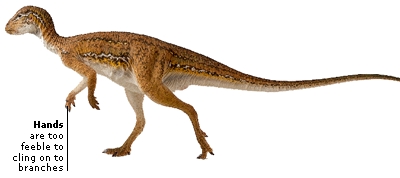DK Science: Changing Faces
No one has ever seen a living dinosaur, so scientists rely on fossil remains to provide clues to how these ancient reptiles looked and behaved when they were alive. Scrappy evidence in the past meant the early dinosaur experts had certain beliefs about dinosaurs we now know to be incorrect. New discoveries are being made all the time, and each one expands what we know about dinosaurs – sometimes confirming, and sometimes over-turning, the accepted thinking about a particular species.
The first Hypsilophodon fossils were discovered in 1849, on the Isle of Wight, England. At the time, it was believed this small, agile, plant-eating dinosaur had lived in trees, where it used its long tail for balancing on branches, and its sharp claws for clinging on. This theory has now been proved completely wrong. Today, scientists believe Hypsilophodon was actually a ground-living dinosaur, which held its stiff tail off the ground, using it as a stabilizer as it moved. It probably used its clawed hands to pull at the plants it ate.
One of the most significant leaps in how we think dinosaurs looked has happened since the mid-1990s. Before then it was thought that, because dinosaurs were reptiles, they all had scaly skin. Many scientists no longer believe this to be the case for all dinosaurs, based on fossils found in China. The evidence suggests that some small predators, such as Velociraptor had bodies clothed in feathers and down. These coverings are usually associated with birds, so the finds provide evidence supporting the theory that dinosaurs and birds are related.
Ideas about Corythosaurus’s lifestyle have altered over recent years. These changing views are based on theories about the function of its head crest. As it was hollow, the crest was once thought to be an underwater breathing tube used like a snorkel. This led scientists to believe Corythosaurus lived in water. It is now thought that Corythosaurus was a land animal, and that its crest was either for display, or a sound chamber through which it made noises.
To order this book direct from the publisher, visit DK's website.


